On June 29, 2016, I presented a paper at the American Society of Safety Engineers 2016 Professional Development Conference in Atlanta, Georgia. It was titled “Partner-Centered Safety: A New Leadership Approach for Safety Excellence.”

My message to those who attended my session was that the Bureau of Labor safety statics show the rate of improvement in reducing injuries in the workplace has slowed down since about 2009 and the rate of improvement for deaths has stopped; about 4,600-4,700 people are being killed at work each year.
The safety professionals and managers are putting a lot of effort into improving the safety performance in our workplaces, but we seem to be stuck. I think that the problem is that we are approaching organizations as if they are just complicated systems rather than as complex systems.
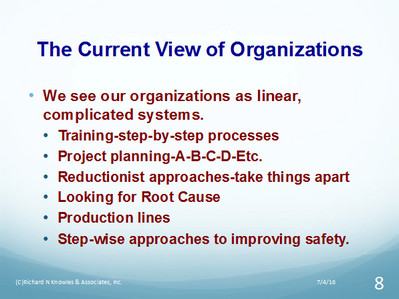
The complicated view of organizations has served us well, and a lot of progress has been achieved. Now we need to move forward in our thinking.
When we view our organizations as complex systems, a better description of the way organizations actually behave emerges.
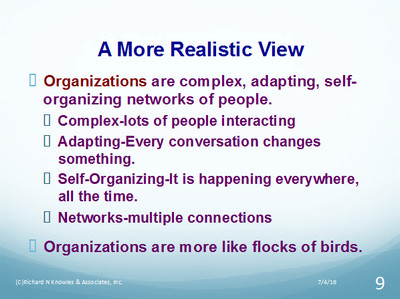
While many people crave reliability, predictability, stability, and control for their organizations, this is rarely achieved. Our organizations are full of movement, feedback, changes, and surprises. Nothing sits still; everything is in motion.
When I learned to view my organization as a complex system, everything improved. Our injury rate dropped by ~97%, earnings rose ~300%, emissions dropped ~88%, and productivity rose ~45%.
My experience in leading the organization as if it was a complicated system was difficult and strenuous. I felt that I had to push everything to get the work accomplished safely, and we never achieved success. When I shifted to a complexity view of the organization, everything became easier to lead, my work was more effective and the improvements were dramatic. In working with the organization as a complex system, the people opened up, the conversations were more purposeful, and energy and creativity were released. All dimensions of the business improved and the people were pleased and proud of their achievements.
There is a lot in making this shift in perspective. I think that everyone can learn to work this way. I would be happy to talk with any of you about this and help you on your own journeys.

 Hardly any of us can do our best work all by ourselves.
Hardly any of us can do our best work all by ourselves.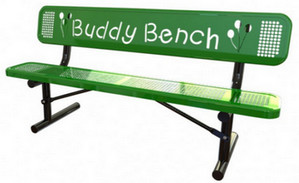 There was a video on Facebook a few weeks ago about Buddy Benches being placed in schoolyards. The video explained the importance of the communication and training that is essential to their use and effectiveness.
There was a video on Facebook a few weeks ago about Buddy Benches being placed in schoolyards. The video explained the importance of the communication and training that is essential to their use and effectiveness. In our Partner-Centered Safety realm, we go beyond this to having everyone (the people on the floor, the supervisors, the managers, and all the others) feel they are cared about. Caring means helping each other, listening to each other, sharing information, being respectful, asking for help and receiving it, looking out for each other, saying we are sorry when we make a mistake, and treating each other as whole persons. Just what caring means for people is something on which they should all agree. Management, alone, should not do it for their approach can often be quite patronizing – treating the people in the work place as if they are children. All the people, at all levels, together, need to come up with their ideas about what caring is for them. Management should not try to dictate the answers, but management needs to open up and lead this discussion about caring or it will not be addressed. Caring is visible; as is non-caring. Partner-Centered Safety is visible caring. Mistreatment of people is non-caring.
In our Partner-Centered Safety realm, we go beyond this to having everyone (the people on the floor, the supervisors, the managers, and all the others) feel they are cared about. Caring means helping each other, listening to each other, sharing information, being respectful, asking for help and receiving it, looking out for each other, saying we are sorry when we make a mistake, and treating each other as whole persons. Just what caring means for people is something on which they should all agree. Management, alone, should not do it for their approach can often be quite patronizing – treating the people in the work place as if they are children. All the people, at all levels, together, need to come up with their ideas about what caring is for them. Management should not try to dictate the answers, but management needs to open up and lead this discussion about caring or it will not be addressed. Caring is visible; as is non-caring. Partner-Centered Safety is visible caring. Mistreatment of people is non-caring. At one of the highest geographical points in Florida, at Lake Wales, is a large, 205-ft high, carillon tower. It is beautiful, as are the gardens surrounding this tower structure, made of glistening coquina stone. The tower and gardens were a gift from benefactor Edward W. Bok, who cared deeply about nature, beauty and sanctuary spaces. Millions of visitors have traversed this place of solace since it opened in 1929. Edward Bok was all about CARING for future generations – to be able to enjoy peace and beauty. His tribute signature is this:
At one of the highest geographical points in Florida, at Lake Wales, is a large, 205-ft high, carillon tower. It is beautiful, as are the gardens surrounding this tower structure, made of glistening coquina stone. The tower and gardens were a gift from benefactor Edward W. Bok, who cared deeply about nature, beauty and sanctuary spaces. Millions of visitors have traversed this place of solace since it opened in 1929. Edward Bok was all about CARING for future generations – to be able to enjoy peace and beauty. His tribute signature is this: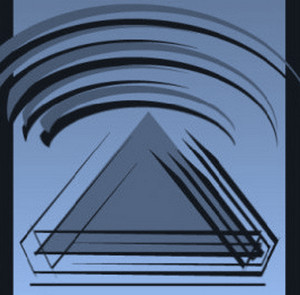 For our workplaces, this is about the way we think about safety, the way we engage around safety, and the way we bring a third unifying force to the whole culture of safety.It’s the missing link in our respective workplaces. Without it, we tend to stay engulfed in a culture of compliance, yet despite trying and trying, we never reach excellence. Without it, we keep repeating the same mistakes – round and round we go.
For our workplaces, this is about the way we think about safety, the way we engage around safety, and the way we bring a third unifying force to the whole culture of safety.It’s the missing link in our respective workplaces. Without it, we tend to stay engulfed in a culture of compliance, yet despite trying and trying, we never reach excellence. Without it, we keep repeating the same mistakes – round and round we go.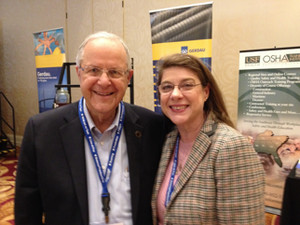 I spoke about Partner-Centered Safety™ and the importance of this as the quickest way to achieve sustainable safety excellence. As many of you know, I have written and spoken about this many times over the last several years. The information and data I share clearly shows that this approach to leading safety is very powerful, producing improved results quite quickly. Many of you have seen the terrific results the people at the DuPont, Belle Plant achieved. This approach has a very strong scientific basis in complex adaptive systems theory.
I spoke about Partner-Centered Safety™ and the importance of this as the quickest way to achieve sustainable safety excellence. As many of you know, I have written and spoken about this many times over the last several years. The information and data I share clearly shows that this approach to leading safety is very powerful, producing improved results quite quickly. Many of you have seen the terrific results the people at the DuPont, Belle Plant achieved. This approach has a very strong scientific basis in complex adaptive systems theory.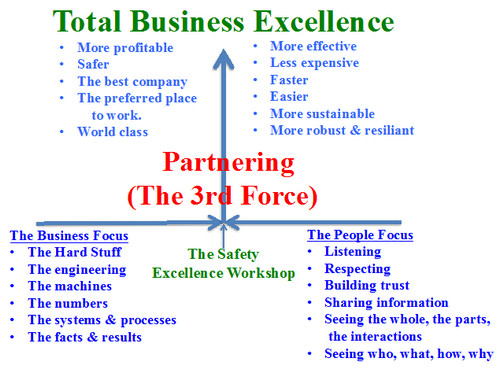
 When the Safety Culture is right…what do you see? What does Excellence look like?
When the Safety Culture is right…what do you see? What does Excellence look like?
 On December 16-18, 2015, I was able to attend the Cruise Line International Association Safety Conference in Miami. The focus was on improving the safety culture and Bridge Resource Management. This is a very interesting business for me to learn about. I was there to give some perspective from the chemical industry.
On December 16-18, 2015, I was able to attend the Cruise Line International Association Safety Conference in Miami. The focus was on improving the safety culture and Bridge Resource Management. This is a very interesting business for me to learn about. I was there to give some perspective from the chemical industry. There is a big need to be sure the managers of chemical plants are qualified so that their employees and neighboring communities do not suffer the consequences of chemical releases and spills. Many manufacturing businesses that do hazardous work, aside from chemical manufacturing, should heed this thinking too.
There is a big need to be sure the managers of chemical plants are qualified so that their employees and neighboring communities do not suffer the consequences of chemical releases and spills. Many manufacturing businesses that do hazardous work, aside from chemical manufacturing, should heed this thinking too. I’m reminded about the organization that thought their safety performance was always good, because they were primarily an office environment. They scoffed over how bad could a paper cut be? Or, what’s the worst that could happen if someone fell off their chair? Little did they expect that one of their office workers, when on a healthy outdoor walk during her scheduled break time, tripped over some roped off tape that had been blown by the wind. She actually walked into it – not paying attention to her surroundings – got caught up in it as it wrapped about her feet. She fell, twisted her knee, required surgical repair, etc., etc. Try to explain that office worker lost-time injury! (The good: healthy walk; The bad: not paying attention; The ugly: lost time injury).
I’m reminded about the organization that thought their safety performance was always good, because they were primarily an office environment. They scoffed over how bad could a paper cut be? Or, what’s the worst that could happen if someone fell off their chair? Little did they expect that one of their office workers, when on a healthy outdoor walk during her scheduled break time, tripped over some roped off tape that had been blown by the wind. She actually walked into it – not paying attention to her surroundings – got caught up in it as it wrapped about her feet. She fell, twisted her knee, required surgical repair, etc., etc. Try to explain that office worker lost-time injury! (The good: healthy walk; The bad: not paying attention; The ugly: lost time injury). We see organizations as complex adapting networks of people who are the vital keys to its success. When the people in the various parts of the network are sharing information and helping each other, all aspects of EHS Performance rapidly improves, resistance to change disappears and the energy bubbles up spilling over into all other parts of the work lifting the organization to new, higher levels of performance.
We see organizations as complex adapting networks of people who are the vital keys to its success. When the people in the various parts of the network are sharing information and helping each other, all aspects of EHS Performance rapidly improves, resistance to change disappears and the energy bubbles up spilling over into all other parts of the work lifting the organization to new, higher levels of performance.




